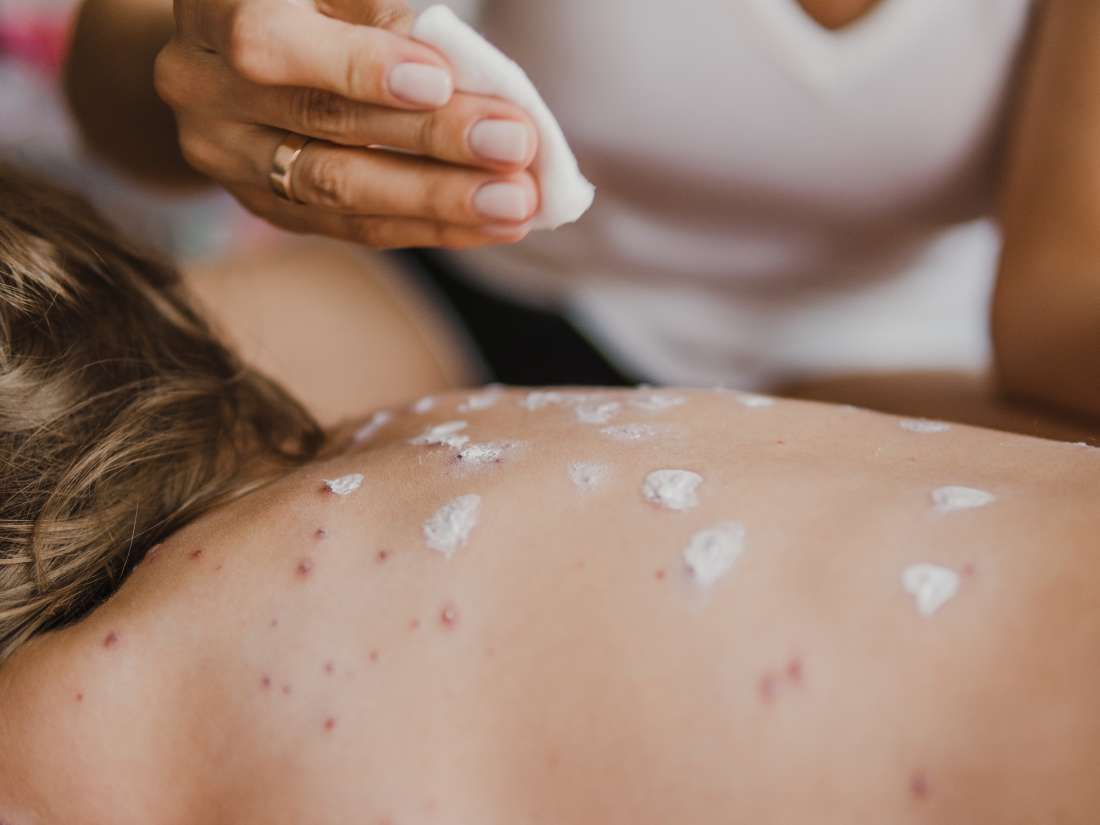In this article, we look at common types of viral rash in adults and children. We also provide advice on how to identify them and when to see a doctor.
What is a viral rash?
A viral rash is one that occurs due to a viral infection. It can itch, sting, burn, or hurt.
The appearance of viral skin rashes can vary. They may appear in the form of welts, red blotches, or small bumps, and they might develop only on one part of the body or become widespread.
The duration of the rash also varies considerably depending on the type of virus that is responsible for it. A wide variety of viruses cause viral rashes. While many viral infections affect people of all ages, some are more common in children and babies, and others primarily occur in adults.
The following are among the most well-known viral rashes:
Mononucleosis
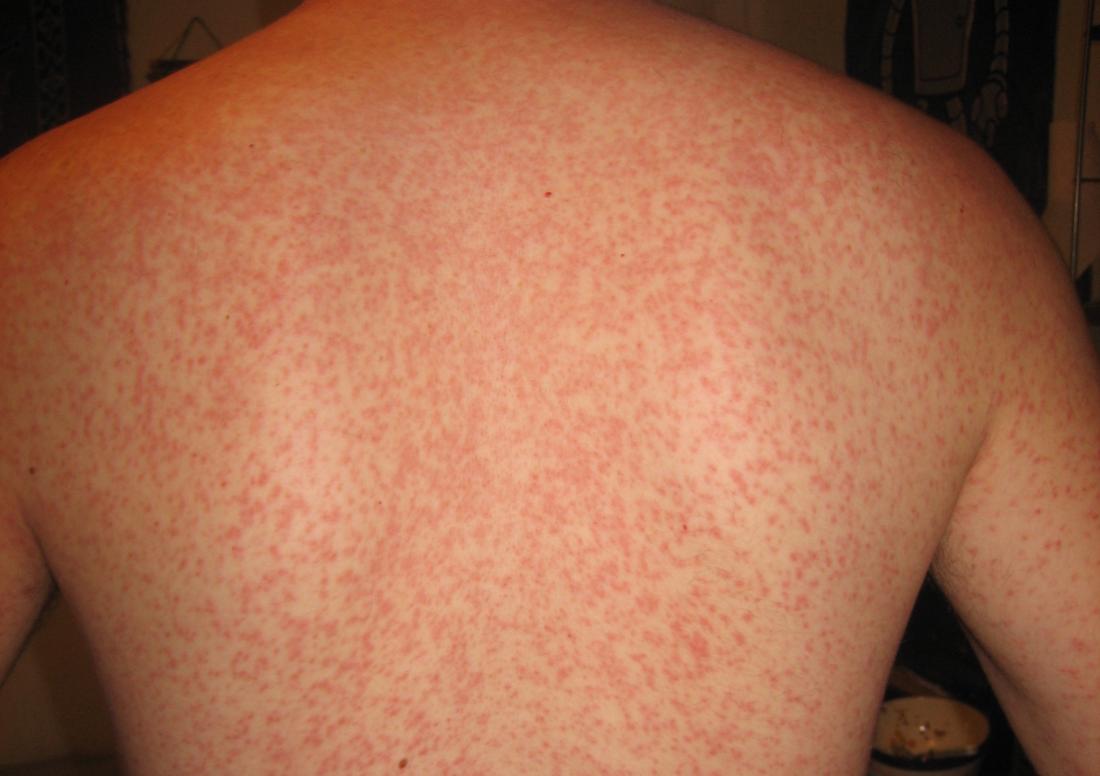
Image credit: Matibot, 2009
The Epstein-Barr virus causes mononucleosis, which can affect people of all ages.
The virus most commonly spreads through bodily fluids, including saliva, which is why people nickname it the “kissing disease.” The rash that develops in mononucleosis typically consists of small red bumps that can occur anywhere on the body, including the face and trunk.
The rash is more prevalent among individuals taking certain antibiotics. In some research, 50–100% of children with mononucleosis developed a rash after taking penicillin derivatives.
Other symptoms of mononucleosis include:
Chickenpox
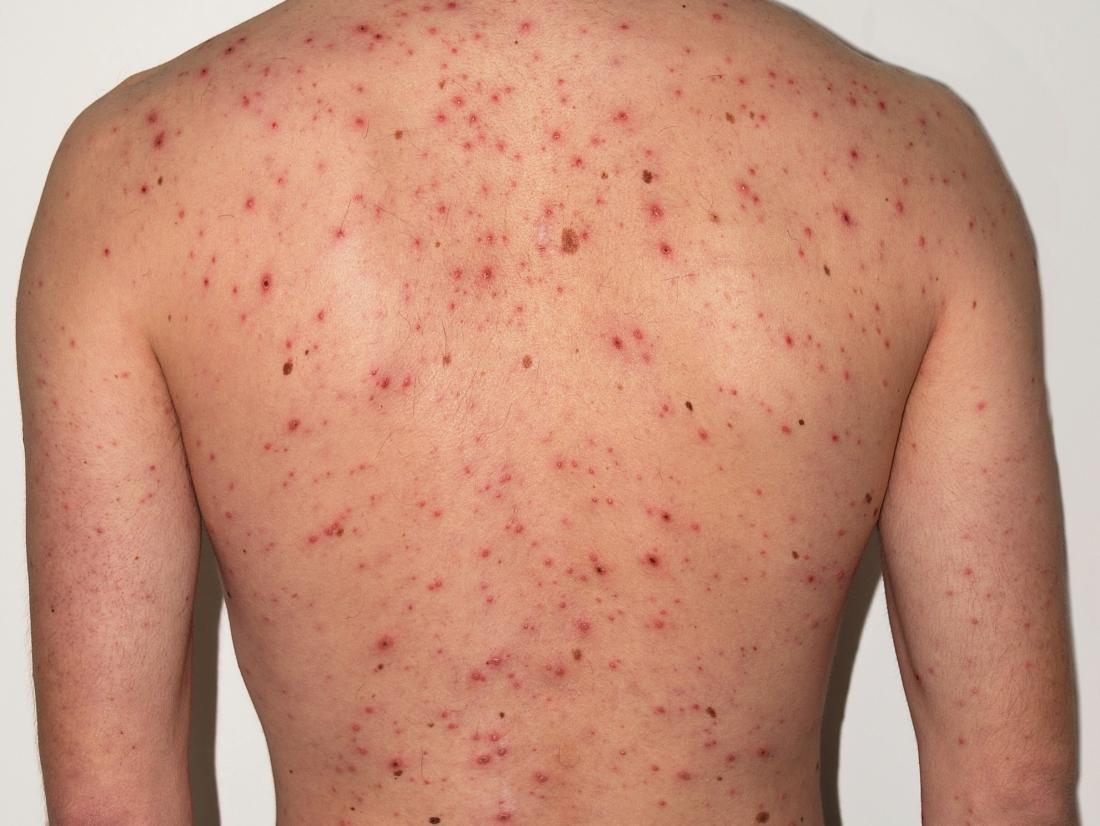
Image credit: F malan, 2010
Chickenpox can occur in adults and children, but it is more common in children. The varicella-zoster virus causes this illness.
The incidence of chickenpox has markedly decreased since the release of the varicella vaccine in 1995. However, the infection can spread quickly among people who have not received the vaccine.
The rash often first appears on the chest and then spreads to other areas of the body. The rash pattern changes as the illness progresses. It starts with small fluid filled vesicles that look like blisters, but after a few days, the blisters begin to pop, crust, and scab as they heal.
Along with the rash, symptoms of chickenpox include:
- fever
- loss of appetite
- headaches
Shingles
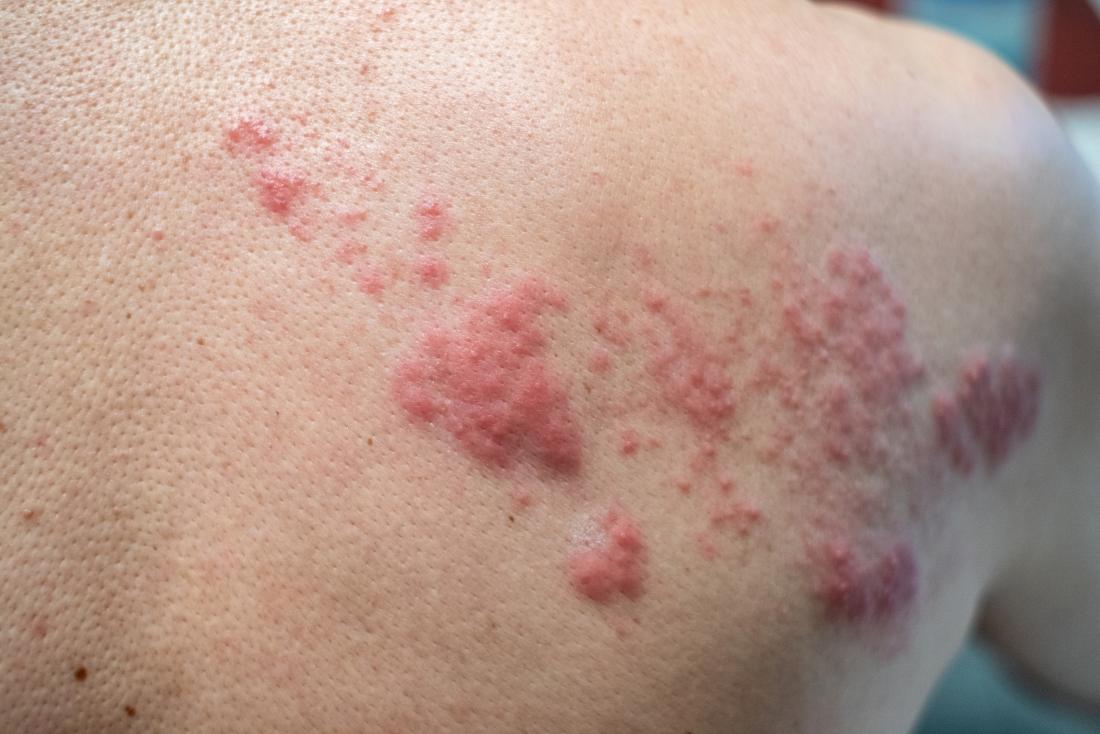
Shingles occurs most often in adults. The reactivation of the varicella-zoster virus, which also causes chickenpox, leads to the development of this rash.
After a person has had chickenpox, the virus remains in certain nerve cells in their body. Although the virus often stays dormant forever, in some instances, it reactivates and leads to shingles. Shingles involves a red, painful blistering rash that can develop anywhere on the body.
Other symptoms of shingles include:
- nerve pain, which can be long lasting
- fever
- headaches
Measles

Image credit: CDC/Dr. Heinz F. Eichenwald, 1958
Measles causes a viral rash that usually starts behind the ears and spreads to the face, neck, and trunk. The rubeola virus is responsible for this illness.
Measles is different than German measles, which occurs due to the rubella virus and may also cause a rash. German measles is usually less severe than measles, but rubella can cause severe congenital abnormalities if a pregnant woman contracts it.
According to the World Health Organization (WHO), measles is a serious infection that is sometimes life threatening. An estimated 110,000 people worldwide died from the virus in 2017, most of whom were young children. Despite the availability of a safe and effective vaccine, there has been a resurgence in the incidence of measles in the United States due to a reduction in vaccination rates.
Additional symptoms of measles include:
- fever
- runny nose
- cough
- watery eyes
Fifth disease
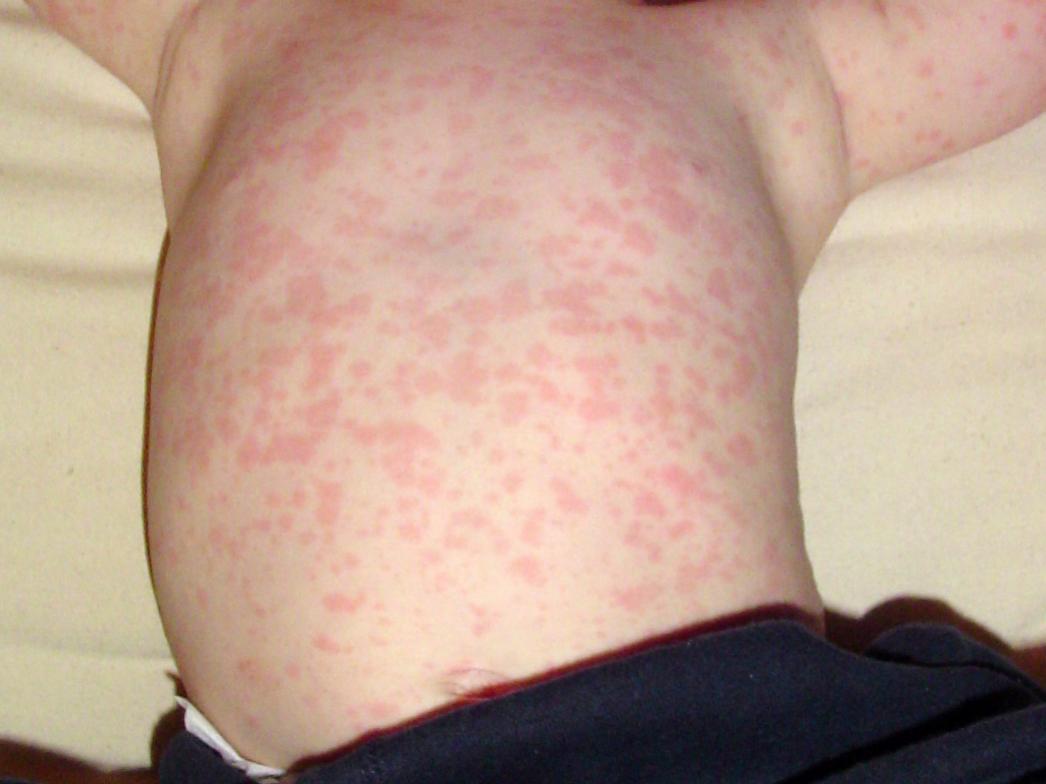
Image credit: Andrew Kerr, 2007
Fifth disease typically causes a rash on the face that looks like a slapped cheek. The rash may also spread to other areas of the body. Parvovirus B19 causes fifth disease.
According to the Centers for Disease Control and Prevention (CDC), although it can develop at any age, fifth disease occurs more often in children.
Common symptoms of fifth disease include:
- fever
- headaches
- joint pain
- a runny nose
Roseola infantum (sixth disease)
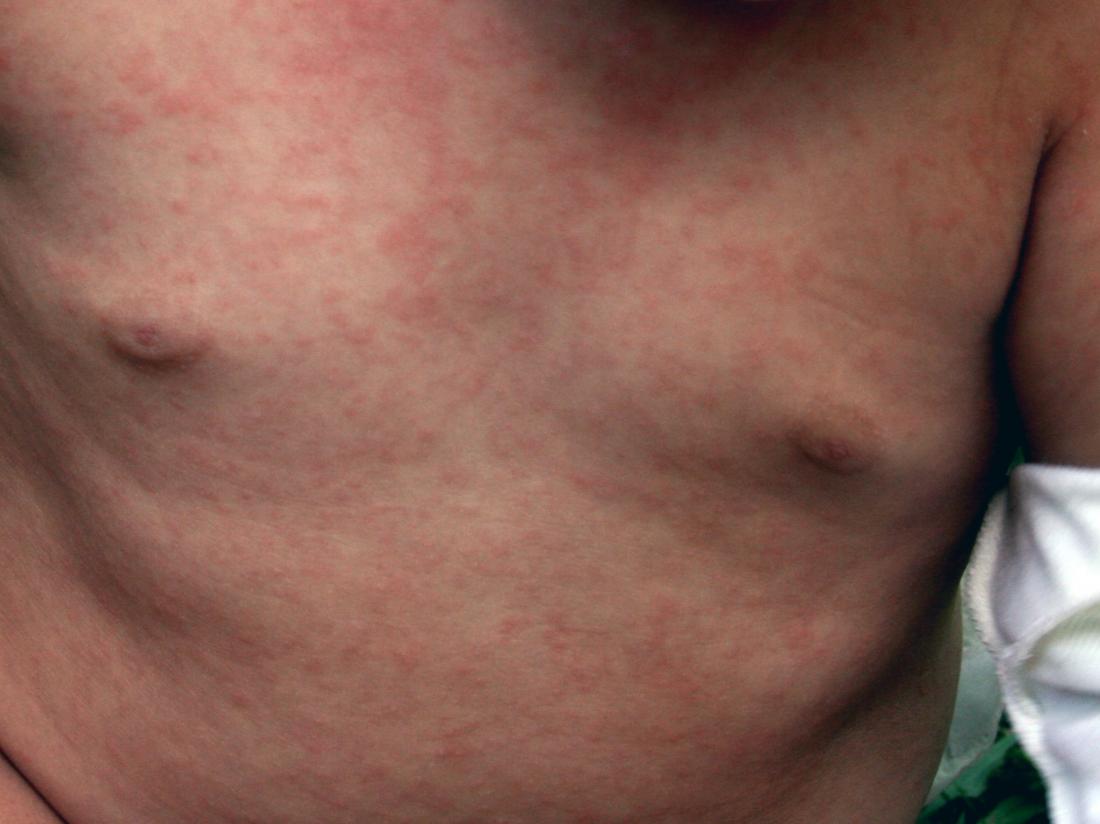
Image credit: Emiliano Burzagli, 2008
Roseola infantum, which people sometimes refer to as sixth disease, most often develops as a result of the human herpesvirus 6.
The rash appears as small pink spots that are usually flat. It may start on the chest and stomach before spreading to the arms and possibly the legs. The rash is generally not itchy.
Sixth disease mostly develops in infants between the ages of 6 months and 1 year. About 90% of cases occur in children under the age of 2 years.
Additional symptoms may include:
- sudden high fever
- a cough
- decreased appetite
Treatments
A viral rash generally does not require treatment, but when specific antiviral medications are available, treating the underlying virus may reduce symptoms.
Usually, as the virus clears up, the rash also subsides. In the meantime, people can try the following to ease itching, pain, and any other discomfort:
- Applying a topical lotion, such as calamine lotion or a topical corticosteroid, to decrease itching. It is best to use a product that is fragrance free to reduce the risk of irritation. Read about other ways to relieve itching.
- Taking an oatmeal bath to soothe the skin and reduce itching. Colloidal oatmeal, which is different than edible oats, is a good option for a bath. People can purchase colloidal oatmeal products in drugstores or online.
- Applying cool compresses to the skin to relieve pain and itching.
- Avoiding scratching the rash, as this can increase pain and may lead to a skin infection.
It is important to talk to a doctor before taking or giving a child over-the-counter antihistamines to decrease itching or acetaminophen to relieve pain. These medications may have adverse side effects.
When to seek medical attention

A topical lotion may ease the itching of a rash.
Usually, additional systemic symptoms occur alongside a viral rash. As many infections can cause a rash, it is helpful to seek professional medical care to determine the cause.
The American Academy of Dermatology recommend seeking medical attention for a viral rash if:
- it spreads quickly throughout the body
- there are signs of an additional bacterial infection, such as streaks coming from the rash or leaking of fluid
- it is painful
- it lasts longer than a week without any improvement
Summary
Viral rashes can occur due to many common viruses, especially those that affect babies. Various illnesses, such as mononucleosis, chickenpox, sixth disease, and measles, cause a viral rash.
A viral rash may appear as small bumps, blisters, or patches in various parts of the body. The rash typically goes away once the illness has run its course.
Although the rash itself is not usually a cause for concern, the underlying virus may require medical care. Anytime a new rash develops, and the reason is unknown, it is best to see a doctor.
